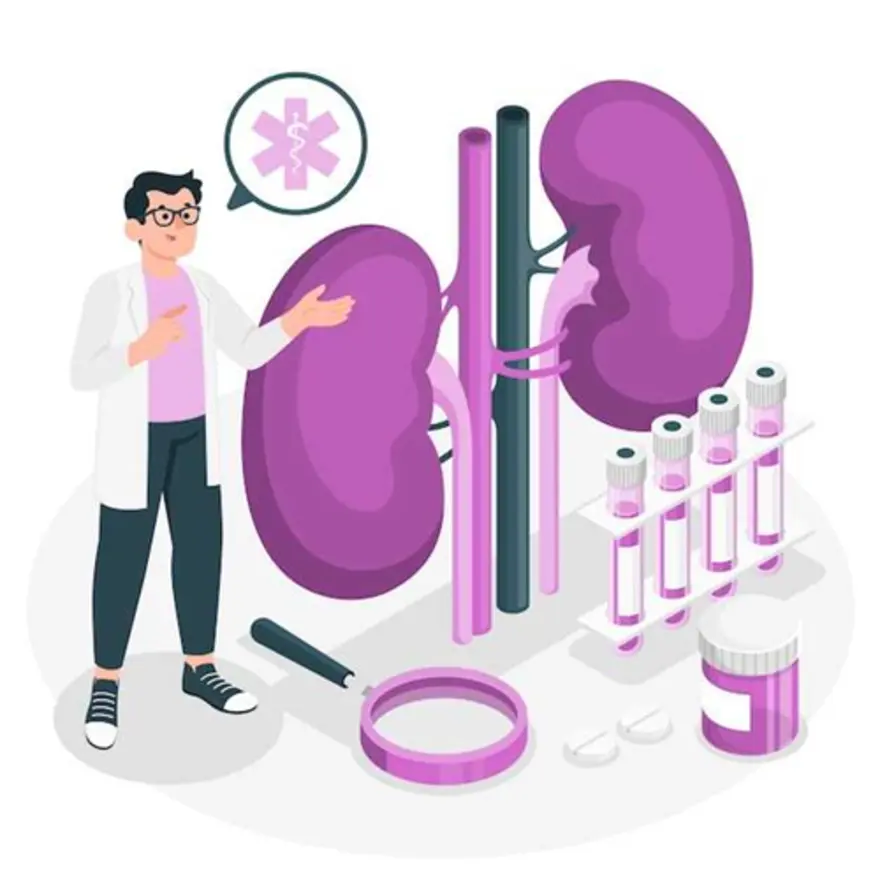Preventive Healthcare
Hb (Haemoglobin) Blood Test: What It Is, Need, Procedure & Results
4484 Views
0
-Blood-Test1704343741.webp)
Your health is your most valuable asset, and understanding the basics of health monitoring is the first step to maintaining it. One essential aspect of this is knowing about haemoglobin levels. Haemoglobin, a protein found in your red blood cells, is vital in carrying oxygen throughout your body. A haemoglobin test is a blood examination that can reveal a lot about your health.
In this article, we'll delve into what haemoglobin is, why it's important, how the test is conducted and what different Hb levels in blood signify. This information is vital for your well-being, and we'll break it down in simple terms for everyone to understand.
What is a Haemoglobin Test?
A haemoglobin test is a medical examination that measures the haemoglobin levels in your blood. Haemoglobin is a protein found in red blood cells (RBCs) and carries oxygen from the lungs to the body's tissues and organs. This test is often performed to assess the overall health of your blood and to diagnose various medical conditions related to the blood and oxygen-carrying capacity. It can help diagnose conditions such as anaemia (low haemoglobin) and polycythaemia (high haemoglobin), monitor chronic conditions, evaluate the effectiveness of treatments and assess overall health.
Why is a Haemoglobin Test Done?
A Haemoglobin test provides critical insights into blood health. Some usual reasons for performing a haemoglobin test are:
- To identify and diagnose anaemia, a condition characterized by low Haemoglobin levels.
- To assess for blood disorders or underlying health issues.
- As a part of routine check-ups to evaluate general health and detect potential concerns.
- To track the progress of chronic conditions affecting Haemoglobin levels and normal haemoglobin levels by age.
- To ensure that patients have sufficient oxygen-carrying capacity before surgery.
- To gauge the effectiveness of treatments for conditions related to haemoglobin.
Low Haemoglobin
Low Haemoglobin levels, often referred to as anaemia, typically fall in the 40-50 g/dL range. Anaemia can lead to fatigue, weakness and a decreased ability to carry oxygen to the body's tissues and organs. Various factors, including nutritional deficiencies, chronic diseases, or genetic conditions, can cause anaemia.
What is a critically low haemoglobin level?
A critically low haemoglobin level is typically considered less than 7 grams per deciliter (g/dL) and requires urgent medical attention.
High Haemoglobin
High Haemoglobin levels can indicate polycythaemia and usually fall in the range of 50-60 g/dL. Polycythaemia is a condition where the body produces too many red blood cells, which can lead to thicker blood and an increased risk of blood clots and other complications.
How do I prepare for a Haemoglobin test?
Preparing for a Haemoglobin test is very straightforward, as no specific preparations are required. In other words,
- There is no need to fast or follow any dietary restrictions before the test.
- You can eat and drink normally before the test.
It's essential to follow any specific instructions your healthcare provider provides, as individual cases may vary.
How is a Haemoglobin Test Done?
A Haemoglobin test is typically conducted as follows:
- A healthcare professional will draw a blood sample using a small needle, usually from a vein in your arm. Alternatively, for some tests, they may prick your finger, particularly for infants.
- A small amount of blood is collected into a tube for analysis.
- Minimal Discomfort: You may feel a slight poke or pinch during the needle insertion, but the haemoglobin test procedure is generally quick and relatively painless.
- The collected blood sample is then sent to a laboratory for analysis, where the haemoglobin concentration is measured in grams per decilitre (g/dL) of blood.
The Haemoglobin test results provide valuable information about your blood health, precisely the amount of haemoglobin, which is essential for oxygen transport in the body.
What are the Risks of a Haemoglobin Test?
Haemoglobin tests are generally safe with minimal risks. The most common risk is minor discomfort at the site where blood is drawn, including bruising or bleeding.
What Level of Haemoglobin is Normal?
The hemoglobin normal range can vary slightly based on factors such as age and gender. Typical Haemoglobin levels are approximately as follows:
- For men: 13.8 to 17.2 grams per decilitre (g/dL).
- Normal hemoglobin level in females: 12.1 to 15.1 g/dL.
- Newborns have 17 to 22 gm/dL of hb level in blood,
- 12-18-year-olds range from 13.0 to 16.0 g/dL, and
- Those above 18 years have 13.6 to 17.7 g/dL.
It's essential to note that the specific reference for the hb normal range may also vary slightly between different medical sources.
What do Low Hemoglobin Levels Mean?
Low Hemoglobin levels, known as anaemia, signify a reduced capacity of the blood to carry oxygen to body tissues. Symptoms of anaemia include fatigue, weakness, pale skin, shortness of breath and rapid heart rate. Anaemia can result from various underlying causes, such as:
- Chronic bleeding from sources like ulcers, gastrointestinal conditions, or heavy menstruation
- Inadequate intake of iron, vitamin B12, or folate, essential for red blood cell production
- Conditions like chronic kidney disease, inflammatory disorders, or certain cancers can interfere with red blood cell production or lifespan.
- Diseases affecting the bone marrow, where blood cells are produced
Low Haemoglobin levels often necessitate further medical evaluation to determine the underlying cause and appropriate treatment, which may include dietary changes, supplements, or addressing the underlying condition.
What do High Haemoglobin Levels Mean?
High Haemoglobin levels, known as polycythaemia, indicate an elevated concentration of red blood cells in the blood. This condition can be caused by various factors, including smoking, living at high altitudes, or underlying medical conditions like polycythaemia vera, a rare blood cancer.
High Haemoglobin levels can lead to increased blood thickness, potentially raising the risk of blood clots, stroke and heart problems. Thus, medical evaluation is crucial to determine the cause and appropriate management, which may involve lifestyle changes or medical treatments, depending on the underlying condition.
What is the Difference Between a Haemoglobin test and a Haemoglobin A1c test?
A haemoglobin test measures the haemoglobin concentration in your blood at a specific time. It's often used to assess overall health and diagnose conditions like anaemia. In contrast, a haemoglobin A1c test measures the average blood glucose levels over the past two to three months, serving as a crucial tool for monitoring diabetes.
Conclusion
Understanding Haemoglobin levels is essential for monitoring one's health. A Haemoglobin test, a simple blood test that doesn't require special preparation, can provide valuable insights into your blood's oxygen-carrying capacity. Whether checking for anaemia or assessing overall health, this test plays a crucial role.
Metropolis Labs, a trusted name in diagnostic labs, offers reliable and convenient blood testing. With a team of qualified professionals and advanced labs, Metropolis ensures accurate results. At-home blood collection service and online report delivery through the Metropolis TruHealth app make the process convenient and hassle-free. So, for accurate blood testing and comprehensive health check-ups, visit Metropolis Labs today!























 WhatsApp
WhatsApp